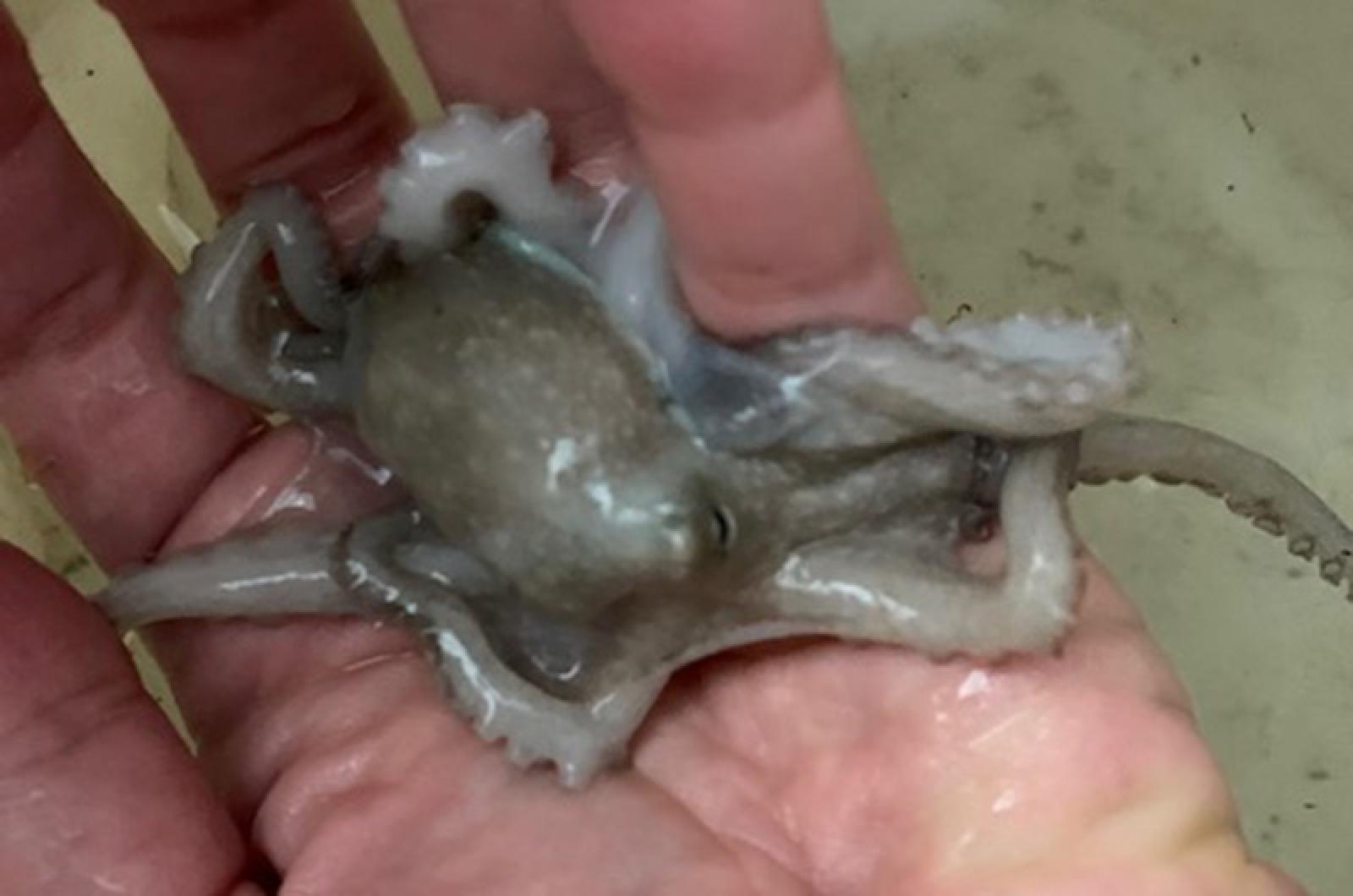“Release the kraken!”
It wasn’t Liam Neeson’s Zeus uttering the phrase first made famous in the 1981 remake of the movie Clash of the Titans. Nor did it come from a right-wing lawyer’s rallying cry regarding a conspiracy theory about a lost election. It was me being somewhat dramatic as I decreed to send the octopus back to her watery wonderland.
The drama and humor were both lost on the younger staff at Felix Neck who neither remembered the movie nor knew of the political flap. At least I amuse myself.
The “kraken” was a small octopus, brought to the sanctuary for a show and tell with our preschool students. It had been found in a whelk trap by a local, and sanctuary staff asked about keeping it in our salt water tank. Since octopuses are known for their abilities to squeeze out of even the most secure space, I was hesitant to try to restrain such a well-known escape artist.
Photos were taken, memories were made, cephalopod lessons were learned, and the eight-limbed animal was returned.
Octopuses have so many terrific traits and fascinating foibles, it is hard to know where to start. Maybe age before beauty. The octopus’s oldest fossil relatives date back to the Carboniferous Age, over 296 million years ago.
Besides longevity as a species, these creatures have looks and brains, though its brains are found in its arms as well as its head. Two-thirds of an octopus’s neurons reside in its limbs and the last third in its head. Those arms literally have a mind of their own. They can act independently of the octopus’s brain — detached limbs can still think and respond — problem-solving independently of its now-separated body.
They also have hearts -- three to be exact — that all work best if the animal crawls instead of swims. When swimming, the octopus’s heart will stop beating, so the best way for the octopus to avoid exhaustion from lack of oxygen is to crawl.
The first two hearts pump blood through its gills and the other pumps blood through its organs. And that blood, like horseshoe crab blood, is blue because it is a copper-based hemocyanin protein that transports the oxygen. Copper is more efficient at low temperatures and in oxygen-limiting environments, so it the right choice for the octopus. A recent and future problem for these invertebrates is climate-driven ocean acidification, which will cause lower pH that reduces an octopus’s ability to circulate its blood.
Another funny fluid that octopuses use is their ink, which is created and held in an ink sac. Octopuses use this potent liquid to confuse and harm other creatures. The ink can cause a blinding irritation and distort the senses of smell and taste in their predators and prey in addition to fogging the area. This substance can also cause self-inflicted harm, so they must escape their emission or can die at their own hand.
Though not true hands, one of those arms extends their importance as a reproductive structure. A male’s third arm on the right side is called a hectocotylus, and serves to deliver spermatophores to the female either by inserting it into her breathing funnel or simply handing over his spermatophores. She always receives them with one of her right arms.
Once mating is complete, it is game over for both lovers. The male dies soon after sharing his spermatophore, and the female has a bit more time as she must lay and tend to her eggs. After they hatch, her body begins to die cell by cell, starting with her eyes and spreading down and outward till she perishes.
Not a fairy tale ending, perhaps, but one that has worked for the species for hundreds of millions of years, flourishing in its strange and mysterious beauty in one of the most dangerous and unforgiving environments on earth.
Suzan Bellincampi is islands director for Felix Neck Wildlife Sanctuary in Edgartown and the Nantucket Wildlife Sanctuaries. She is also the author of Martha’s Vineyard: A Field Guide to Island Nature and The Nature of Martha’s Vineyard.




Comments
Comment policy »